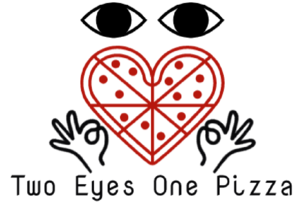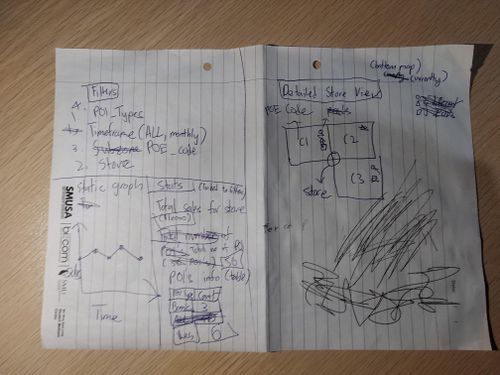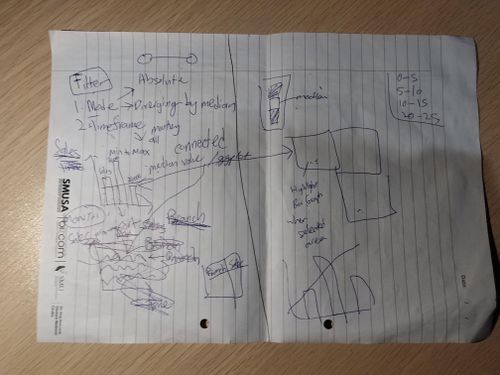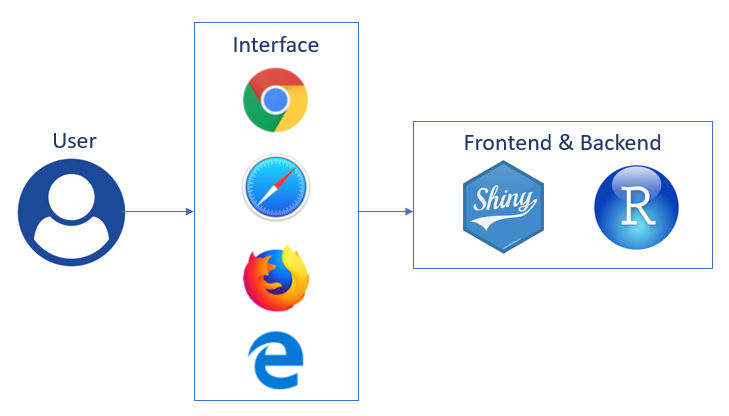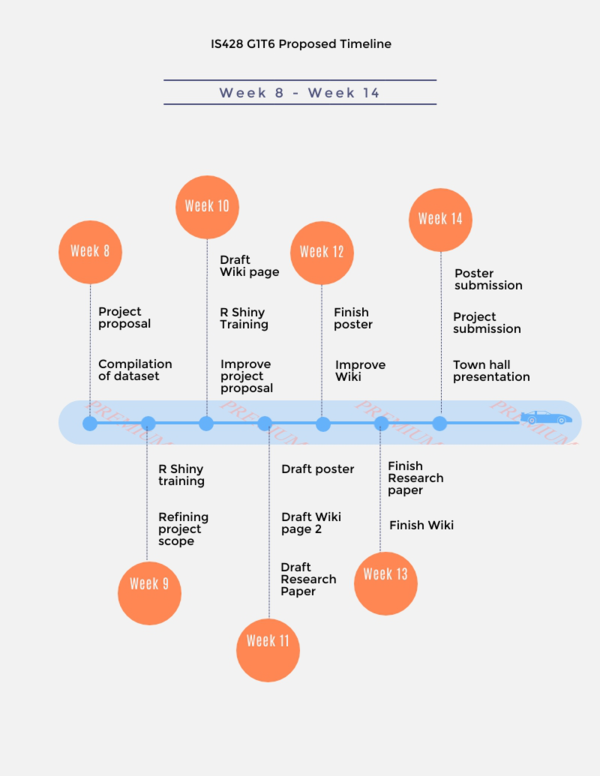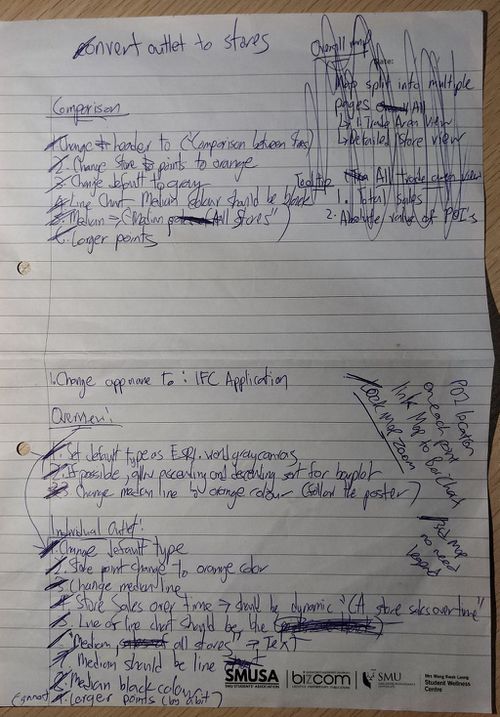Two Eyes One Pizza
Contents
Introduction
International Food Chain (IFC) is a leading brand in its sector, with over 18000 outlets worldwide and an ever-growing presence in the global market. In Taiwan alone, IFC has over 240 branches and are constantly expanding.
However, as the franchise grows bigger, so does its challenges. One of the challenges involves the lack of a tool to efficiently compare the performance of each chain to one another.
Leveraging on this fact, our group aims to build a dashboard for IFC that allows for visualization and modeling. We hope to track the performance of each chain in relation to Point-Of-Interests surrounding each chain, uncovering and comprehending phenomena, with the aid of spatial data.
This project was made in tandem with: https://wiki.smu.edu.sg/1920t1smt201/G1-Group10
Problem and Motivation
To build a dashboard that allows for:
- Business profiling of the company’s outlet to determine Points-Of-Interests that can generate insights such as: Highest earning outlets, relative performance of outlets, outlet’s profile patterns and item sales information.
- Creating dynamic visualisations to make informed business decisions, such as determining locations for new outlet openings with matching POIs of high sales outlets
- Digitizing of each chain’s trade and delivery area
- Scalable program to incorporate future data to generate current information (Using data from other cities besides Taiwan)
- Easy and intuitive tool to quickly view information with regards to all branches
Objectives
This project aims to provide insights into the following:
- Outlets with the highest monthly sales
- Relative monthly performance of each outlet
- Each branch geographical information, including the type and number of POI’s in the surroundings
- Profiling of similar types of branches
- Improvements for poor performing outlets
- Scalable system to incorporate future data
Background Survey of Related Works
| Visualizations | Explaination |
|---|---|
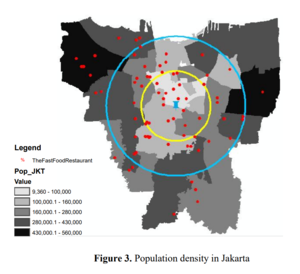
|
The visualization provides the buffer polygons, as well as representing population density of the area through colour. By comparing the two, we can conclude whether the center of activity is proportional to the population density in a region. It allows us to perform further exploration to see what spatial information significantly affects the level of activity in a city, such as the availability of points-of-interest. This visualization is great as it allows the viewer to clearly see multiple dimensions dealing with spatial data in an elegant way. |
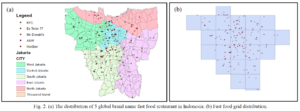
|
Data source: https://www.researchgate.net/publication/324949619_Visualization_of_Fast_Food_Restaurant_Location_using_Geographical_Information_System |
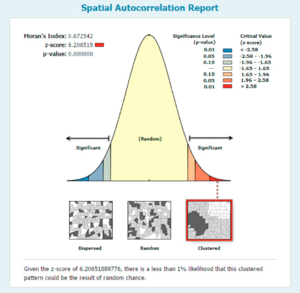
|
Data source: https://www.researchgate.net/publication/324949619_Visualization_of_Fast_Food_Restaurant_Location_using_Geographical_Information_System |

|
Data source: https://www.researchgate.net/publication/324949619_Visualization_of_Fast_Food_Restaurant_Location_using_Geographical_Information_System |
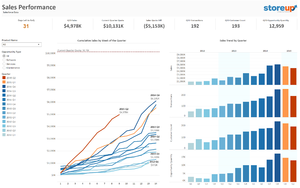
|
Data source:
https://public.tableau.com/profile/mirandali#!/vizhome/Salesforce-SalesPerformance/SalesPerformance This databoard shows the cumulative sales. We could learn from this and display by outlets to compare the performance by having multiple forms of visualization. We really like the fact that certain key summarizations and variables are displayed on the top, and will consider using this in our project. |
Proposed Storyboard
1. IFC Store Sales Overview
Upon entering the application, the user will be greeted with the IFC Stores Sales Overview page. Users will be able to analyse the sales performance of all stores, through a selected period using this page. It will consist of an interactive choropleth map and bar chart. User will also be able to filter the data by Sales by Month and sort the bar chart by ascending or descending sales.
2. Individual IFC Store Information
This page allows the user to inspect each individual stores, and view its POI and Sales. It consists of an interactive choropleth map, line chart and data table. The map displays all subzones of the trade area, denoted by the names on the polygon. The line chart shows the total sales for Store X and the median for all stores over time. The line chart is interactive, and mousing over the points bring up the date and sales of the respective stores. The data table shows all POIs located in the trade area of Store X. The table contains an alphabetical search function, as well as the ability to sort by numerical value by clicking on the arrows buttons on the top right. User will also be able to filter by store and POI through a side panel.
3. Comparison Between Stores
This dashboard allows the user to compare Store X and Store Y to analyse its Points of Interest (POI), Sales and discover the differences between the two stores. It consists of an interactive choropleth map, line chart and data table. The map displays the trade area of Stores X and Y, denoted by the names on the polygon. Clicking on the Pizza Symbol brings up the full name of the store. Clicking on the trade area brings up the total number of selected POIs in the trade area. The line chart shows the total sales for Store X, Y and the median over time. The line chart is interactive, and mousing over the points bring up the date and sales of the respective stores. The data table shows all POIs located in the trade area of Store X,Y. The table contains an alphabetical search function, as well as the ability to sort by numerical value by clicking on the arrows buttons on the top right.
Tools and Libraries
The following tools and libraries are used in the development of the web-based data visualisation application:
- QGIS
- Microsoft Excel
- R Studio
- R Shiny
- Tableau
- Adobe Suite
- Google Drive
Architectural Diagram
The following architectural is used in the implementation of the visualisation tool: The application is deployed through R Shiny with shinyapps.io.
Datasets
These are the datasets we plan to use:
| Dataset | Rationale |
|---|---|
| |
| |
| |
|
Foreseen Technical Challenges
We encountered the following technical challenges throughout the course of the project. We have indicated our proposed solutions, and the outcomes of the solutions.
| Key Technical Challenges | Proposed Solution | Outcome |
|---|---|---|
|
NA | |
|
We managed to start using the packages quickly and suit our own project needs. Each of us work on different parts such as setting up, designing, logic and deployment. This speeds up our project progress. | |
|
The adopted process was having clear instructions issued to each member in the team, along with maintaining constant communication with each other. In the event that the dataset is deemed too dirty to be usable, it was dropped along with sourcing for new data that would be a suitable replacement. | |
|
NA | |
|
The data points can better allow us to generate insights on the profile of each outlet via its trade area. | |
|
NA | |
|
NA |
Roles & Milestones
- Roles
| Kelvin Chia Sen Wei | Linus Cheng Xin Wei | Wang Xuze |
|---|---|---|
App Developer |
Project Manager |
Report Writer |
- Project Timeline
- Gantt Chart

References
- Tableau: https://www.tableau.com/learn/training
- R Shiny: https://shiny.rstudio.com/tutorial/
- QGIS: http://www.qgistutorials.com/en/
List of Proposed Features
Comments
Feel free to leave comments / suggestions!
